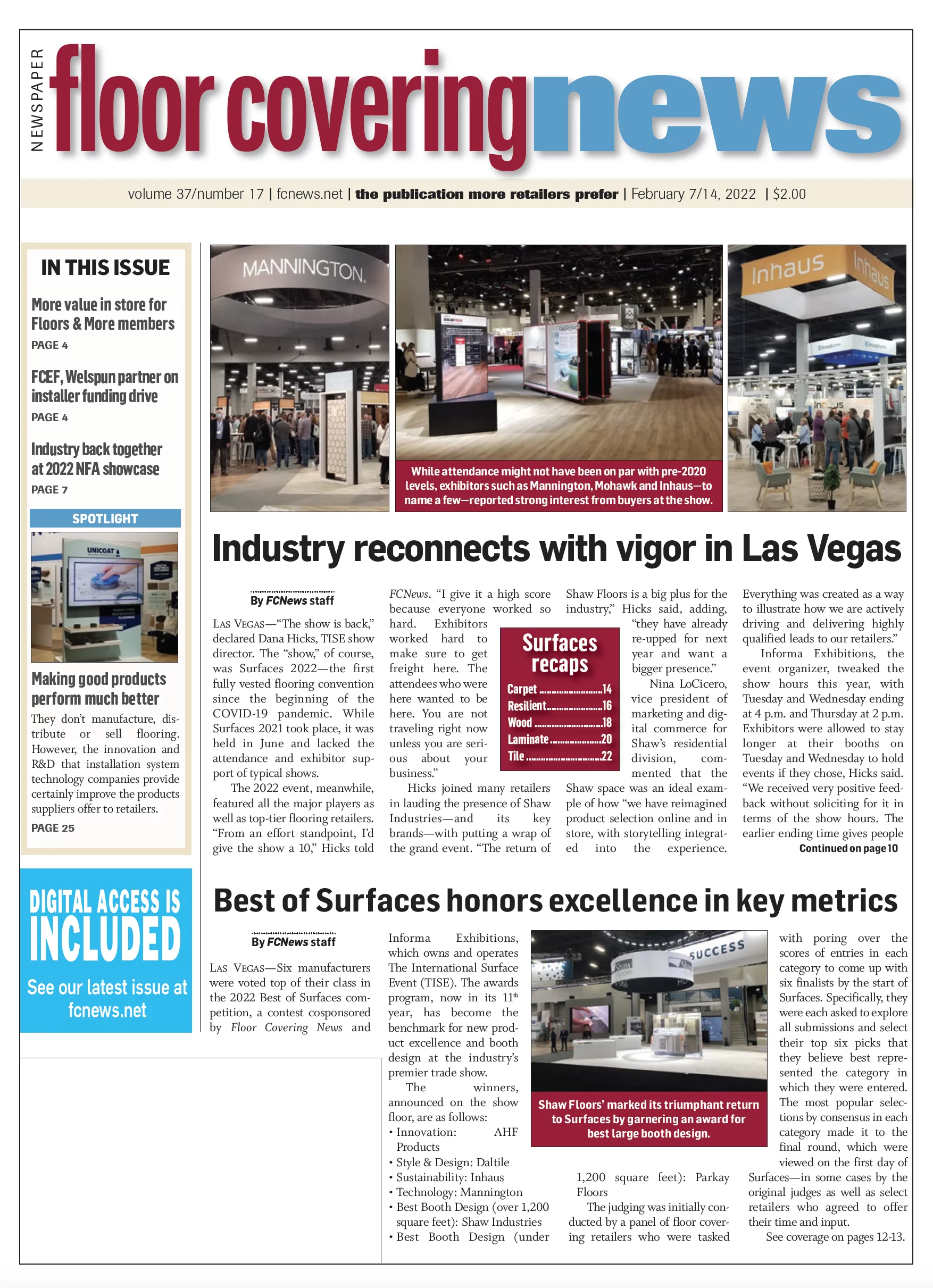 Managing moisture in the early stages of any flooring installation is critical to keeping projects on track and translates into long-term savings. The price tag of mismanaged moisture in construction projects amounts to a staggering $1B annually. It’s a problem that impacts nearly 20% of all construction projects in the U.S.
Managing moisture in the early stages of any flooring installation is critical to keeping projects on track and translates into long-term savings. The price tag of mismanaged moisture in construction projects amounts to a staggering $1B annually. It’s a problem that impacts nearly 20% of all construction projects in the U.S.
The good news is the problem is entirely preventable. Approaching a job with a total cost of ownership perspective will help protect your investment in the long term. With moisture management at the forefront of your planning process, you’ll minimize costly repairs down the road and experience the peace of mind that comes with being proactive. Managing moisture has a place in both new construction and renovation work, informing the
design of new builds and the approach taken in remodeling. Not only does the right moisture management plan help to safe-guard your investment, but it is also essential in protecting the health of building occupants.
Following are four key principles to follow to avoid costly moisture mistakes.
- Study the EPA’s recommendations. A solid understanding of moisture control is a must for any project. The EPA describes the objective of moisture control: preventing water intrusion and condensation in areas of a building that must remain dry; and limiting the areas of a building that are routinely wet because of their use (i.e., bathrooms, spas, kitchens and janitorial closets) and drying them out when they do get wet. Their moisture control principles for design have three key areas of focus: controlling liquid water, managing condensation and using moisture-tolerant materials.
- Develop a solid plan. Your moisture management plan should take all the surfaces of your structure into consideration—the bottom, all four sides and the top. Approach your projects with this information in mind. For new construction, devote adequate time and strategy into creating the ideal environment before breaking ground. For remodels, have a detailed moisture analysis performed on the property. Pay special attention to the moisture levels in the concrete slab, noting the source of the moisture and where the water is traveling.
- Choose the right products. Moisture mitigation products can help safeguard surfaces. Considering the typical concrete slab retains about 50 gallons of excess water per cubic yard poured (the amount varies depending on the density of the concrete), implementing a system to limit excess moisture is paramount. Be sure to choose a sealant system that offers a proven solution to moisture vapor issues in concrete. Look for VOC compliant, odorless products without isocyanides or solvents. Opt for high-strength, solvent-free, pressure-sensitive adhesive that can handle high moisture applications without emitting any measurable VOCs.
- Ensure proper application. When implementing your moisture mitigation system, timing impacts results. For example, in your subfloor system, your plan should include everything from preparation to finished floors. In new construction projects with slab work, a moisture mitigation system designed to be applied to concrete within 12 hours after it’s poured (as long as it’s porous) will solve the issue of moisture in concrete floors. In a remodel, carefully time the application of moisture mitigation products to avoid issues when flooring goes in. And always check installation standards.
Jack Aspenson is the president and CEO of S3 Surface Solutions, a client-driven organization that focuses on providing environmentally friendly, simple surface systems that are long lasting and cost-effective. He brings more than 25 years of experience in entrepreneurial business development, consulting and sales management.

